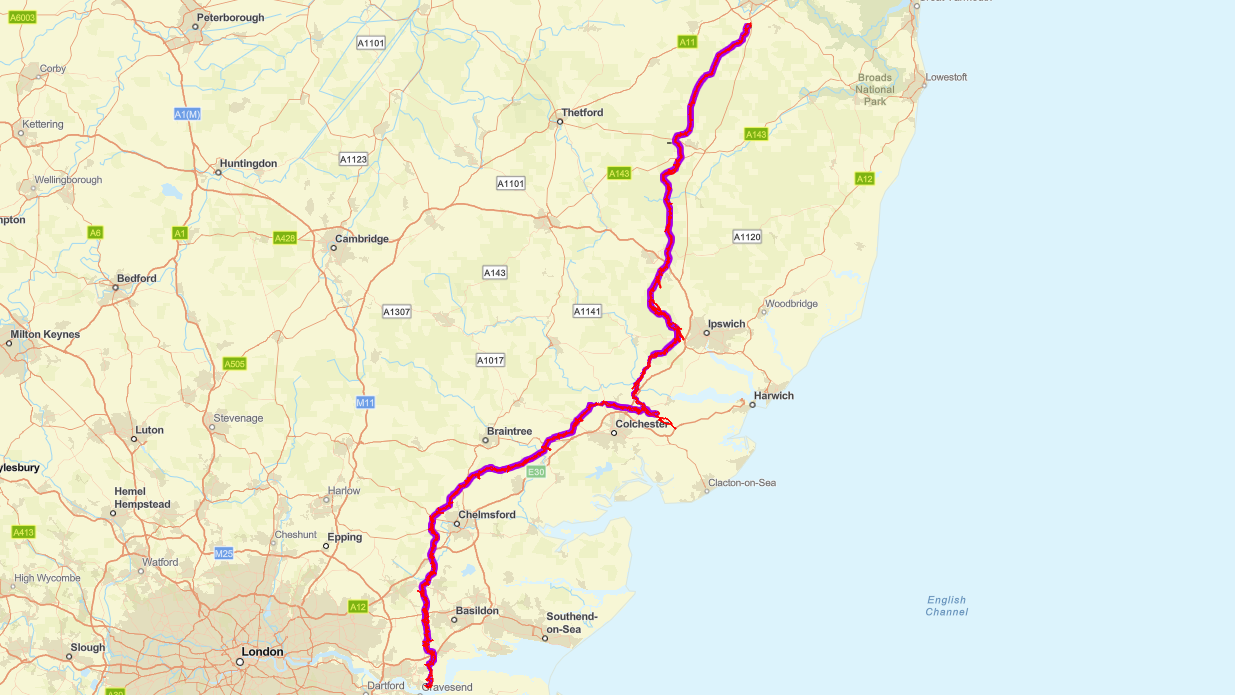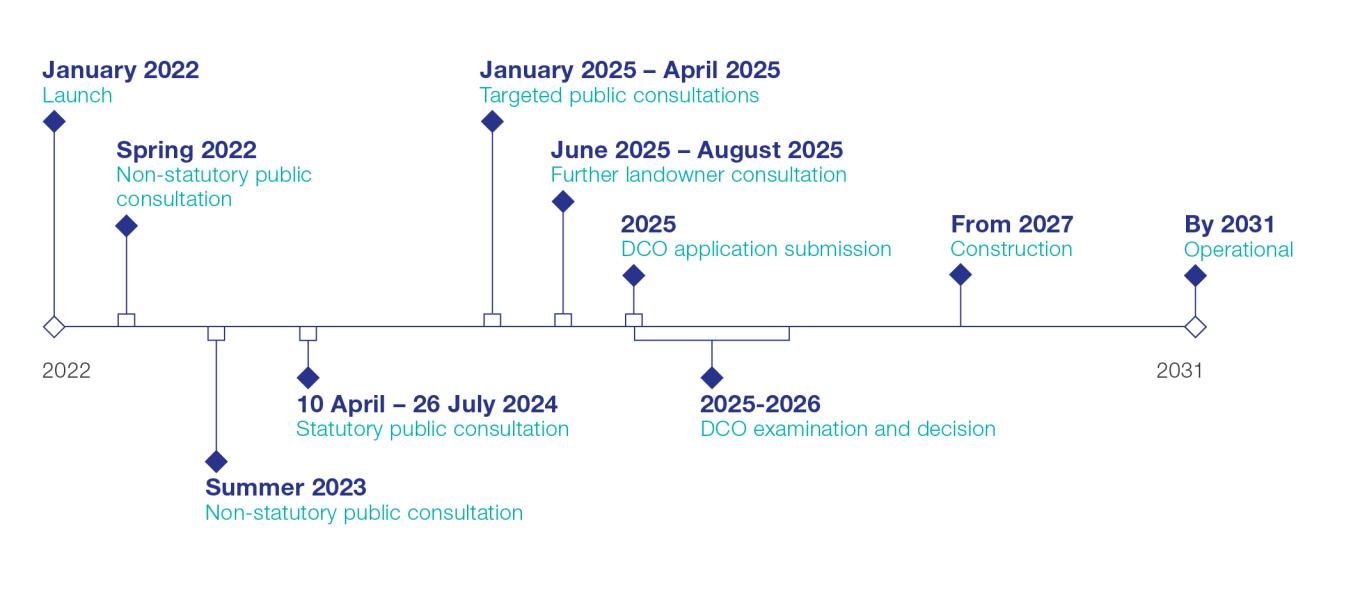Project Update – October 2025
Our Development Consent Order (DCO) application for Norwich to Tilbury has been accepted for examination by the Planning Inspectorate, on behalf of the Secretary of State. Our application documents are available to view on the Planning Inspectorate’s website. This is a major milestone for the project, and we expect the examination to begin in the coming months. A map showing the location of the Project can be viewed in our document library.
About Norwich to Tilbury
Norwich to Tilbury is a proposal to build a new 400 kilovolt (kV) electricity transmission connection for approximately 180 kilometres from the Norwich Main substation via Bramford substation, a new East Anglia Connection Node (EACN) Substation and a new Tilbury North Substation.
Norwich to Tilbury accepted for examination
Norwich to Tilbury is a key part of the Great Grid Upgrade, a £30 bn nationwide transformation of a network originally designed for coal-powered energy. Meeting clean energy targets means urgently expanding our ability to carry clean power from where it’s generated, often offshore, to where it’s needed.
As demand for energy including in East Anglia, is set to double, the Norwich to Tilbury project will deliver new capacity across East Anglia, a powerhouse of renewable energy, particularly offshore wind, but a region that has historically had limited transmission infrastructure.
On 29 August 2025, our DCO application for Norwich to Tilbury was submitted to the Planning Inspectorate. This follows public consultation on the project between 2022 and 2025, where local communities across East Anglia were able to provide their feedback on our proposals.
Following submission, the Planning Inspectorate carried out an initial review of our application to check it met their requirements and on Friday 26 September accepted the application for examination.
You can view all our application documents on the Planning Inspectorate’s website. This includes our Consultation Report, which provides responses to the feedback submitted during the 2024 statutory consultation and the targeted consultations held earlier this year.
How to take part
While we have completed our public consultation on our proposals, you can still make comments by taking part in the examination process. An independent panel of experts will scrutinise our application in detail, including the examination of any representations made by the public and stakeholders.
Interactive map
We have produced an interactive map to show where we are proposing to build our project. The map shows the proposals we’ve submitted for examination by the Planning Inspectorate.
View the interactive map of our proposals

This map shows our proposals along with existing 275 kV and 400 kV electricity infrastructure and related substations in the region. It does not show the lower voltage local distribution network.
Project timeline

Contact the team
Please get in touch if you have any questions or comments on the Norwich to Tilbury development.
- Call our Community Helpline: 0800 915 2497 (Lines are open Monday to Friday 9am – 5:30pm)
- Email us: [email protected]
- Write to us: FREEPOST N TO T (No stamp or further address details are required)
Landowners
You can view our landowners page for more information.
If you feel your land may be affected by the proposals, please contact the Norwich to Tilbury Lands Team at Fisher German by emailing: [email protected] or by calling us on Freephone 0808 175 3314.
Alternatively, you can write to Norwich to Tilbury Lands Team at Fisher German, The Atrium, Risby Business Park, Newmarket Road, Risby, Bury St Edmunds, IP28 6RD